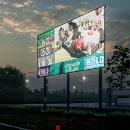What Are Nits?
What Is A Nit Of Brightness?
Essential Takeaways
- Nits is a unit of measurement that refers to the amount of light that is emitted from a surface or object.
- Understanding nits is important if you want to buy a new television or monitor, or if you want to know how bright your current display is.
- The higher the number of nits, the brighter the object or surface will appear.
Believe it or not, modern screens, including the ones on our smartphones, televisions, and laptops, are getting brighter. If you've ever tried shopping for a TV or a similar device, you may have seen a unit of measure called "nit" thrown around. But what is a nit, exactly? How bright is too bright, and how do we measure it?
Back to Basics: Candelas and Nits
Before we delve into nits, we have to understand candelas first. Candelas and Nits are typically mentioned when talking about screen brightness and they both refer to the amount of light that is emitted from a certain area or a given direction.
This basically means it’s a measurement of how bright the light appears to be when you are looking at it from a specific angle. Here’s an in-depth look at these two measurements:
Candelas
A candela is the unit of measurement for light intensity in a particular direction. It's basically the "brightness" of a light source in a specific direction. If you're wondering why it sounds a lot like candle, that's because the word comes from the Latin candela, which means "candle."
One candela is about the same intensity of light as that produced by a common candle. But different types of light sources can produce vastly different numbers of candelas.
For example, a 100-watt lightbulb emits about 1,600 lumens, or 16 candelas. In contrast, the sun is a lot brighter since it produces almost 409,000 lumens per square inch, or about 40.9 million candelas.
What is a Nit of Brightness?
A nit is a unit of measurement that equals one candela per square meter. Candela, in turn, is the unit measurement for light intensity. In other words, a nit is how bright a screen appears to one human eye. The word “nit” comes from the Latin word “nitere” which means “to shine.”
Not all screens are the same brightness. For example, a standard laptop screen might have a brightness of 200 nits, while an HDR TV can have up to 1,000 nits or more.
The difference between these two types of screens is significant. A regular old LCD TV has a limited range of colors and contrast that it can display. On the other hand, an HDR TV has a much wider range of colors and can display more shades of each color. This results in a more realistic and lifelike image.
In order to take advantage of this increased brightness, you need content that is also high-dynamic range (HDR). This means that the colors and contrast in the content have been specifically designed to take advantage of an HDR screen.
Nits measure the intensity of that light. In other words, nits tell you how bright the light appears to be, while lumens tell you how much light is actually being emitted.
On the other hand, Nits and candelas are different because nits measure the brightness at one point. Meanwhile, candelas take into account the entire area that is emitting light.
To put it simply, the higher the nit rating, the brighter and more visible the display will be in bright conditions. If you're looking for a display that you can use outdoors or in other well-lit areas, then you should look for one with a high nit rating.
Why are Nits Important?
Nits are important for a variety of reasons. For one, they help us to understand the true brightness of a display. Most displays are not capable of reaching the full range of human color vision, so nits provide a way to measure the amount of light that is actually reaching our eyes.
Another reason nits are important is because they can help us to compare the brightness of different displays. When two displays have the same nit value, we know that they will appear equally bright to our eyes. This is helpful when we are choosing between different display options, or when we want to make sure that a display is set to its optimal brightness.
Finally, nits can help us to understand the relationship between brightness and power consumption. Displays that are brighter require more power to operate, so nits can help us to compare the efficiency of different displays.
In short, nits are an important tool for understanding and comparing the brightness of displays. This way, we can ensure that our displays are set to the correct brightness and that we are making efficient choices when it comes to power consumption.
What is the Ideal Nits Brightness?
Most monitors, TVs, and phones on the market today range from 250 to 600 nits. Some high-end models can go up to 1,000 nits or more.
But what is the ideal brightness for a screen? That really depends on your needs and preferences. If you're using your device in a bright room, you'll want a higher nit count so the screen is still visible. If you're in a dark room, a lower nit count may be just fine.
Some people prefer a brighter screen because it gives colors more pop and makes text easier to read. Others find that too much brightness can be harsh on the eyes.
Ultimately, it's up to you to decide what nit level is ideal for you. experimentation is key. When shopping, make sure to test different options and see what works best for you. Take your time and look at the available options. Don't rush into a decision so that you don't end up with something you're not happy with.
What are the Max Nit Capabilities of Modern Devices?
Here are the max nit capabilities you can consider for the following devices:
Smartphones/Tablets: 200 to 1000+ nits
Today's generation of smartphones and tablets can emit an incredibly high level of brightness, making them great for use in direct sunlight. The average smartphone has a brightness somewhere between 200 and 1000 nits, with some devices going even higher.
If you're looking for the absolute highest level of brightness, you'll want to look for a device that's rated for 1000 nits or more. However, it's important to keep in mind that a device's brightness can vary depending on the content you're viewing.
For example, watching a video with a lot of white pixels will require more brightness than reading a book with mostly black text. As such, you'll want to pick a device with a brightness that's appropriate for the tasks that you frequently do on your phone.
Laptops/monitors: 200 to 600+ nits
Meanwhile, most laptops and monitors actually have relatively low nits compared to smartphones and TVs. This is because they’re mostly used indoors.
For instance, many popular laptop screens have a brightness of just 200 nits. Some go up to 400 nits, while a few premium models can hit 600 nits or more.
In general, the higher the nit count, the brighter and more vibrant the image on your screen will be. If you use your laptop primarily for general web browsing, watching movies, and working with documents, you probably don’t need more than 200 nits.
But if you do a lot of photo or video editing or gaming, you will want to look for a brighter display. Of course, you also have to consider your CPU's specs since that can also determine the brightness and crispness of your graphics.
TVs: 100 to 2000+ nits
TV brightness range from 100 to over 2000 nits. It depends on the type of TV. For example, an OLED TV can have as little as 30 nits, while a plasma can have over 600 nits. The average for all TVs is about 450 nits.
The higher the nit count, the brighter the picture will be. This is why HDR (high dynamic range) TVs can have such bright highlights—they need to be able to display nits up to 1000 or even 2000 nits for the really bright scenes.
However, just because a TV can get bright doesn’t mean it looks good at those brightness levels. In fact, most TVs look best at around 100 to 300 nits.
The reason is that when content is mastered for HDR, it’s not just the brightest parts that get brighter—the darker parts get darker too. So if your TV can’t display a really deep black, those bright highlights will look less impressive.
To get the best picture quality, you want a TV that can get bright (for HDR highlights) but also has deep black levels. That's why the sweet spot is usually around 100-300 nits.
Projectors: 1000-2000 nits
Most modern projectors have a maximum nit output of 1000-2000 nits. This means that they are capable of emitting a very bright light, making them ideal for use in well-lit rooms or outdoors.
However, it is important to note that the nit output of a projector is not the only factor that determines its overall brightness. The size and type of projector screen can also have an impact on the final product.
For example, a projector with a high nit output may appear dim on a small screen. Conversely, a projector with a low nit output may appear very bright on a large screen. In general, the larger the screen size, the higher the nit output required for optimal brightness.
LED Walls/Screens: 1000-5000+ nits
If you want to go bigger, you can go for full-on LED walls or screens, which can output between 1,000 and 5,000 nits or more. These are great for events or stage productions where you need a really large display that's still going to be visible in broad daylight.
Indoor LED screens, such as digital scoreboards and others used in indoor venue, can emit up to about 2,000 nits, while outdoor screens, like digital billboards and signages, can go as high as 8,000 nits (or more) to account for the higher levels of brightness outdoors.
The most important factor in choosing an LED wall or screen is to determine how much direct sunlight the screen will be exposed to. If it's going to be in a shady area, you can get away with a lower nit output, but if it's going to be in direct sunlight, you'll need a screen that can handle the brightness.
How Do Nits Impact Users Today?
Nits have a profound impact on how consumers perceive displays today. The majority of consumers are unaware of the term “nit”, but its effects are visible in every display that emits light. For more meticulous shoppers who want to get the ultimate value for their money, understanding nits is essential for choosing the right display.
Of course, nits aren't the be-all and end-all of display quality. Contrast, resolution, color accuracy, and other factors are important as well. But brightness is the first thing that people notice when they look at a display, so it's worth understanding how nits work.
One of the best things to do is to have an idea of how a low, medium, and high nit rating appears for the device you're looking to buy. This way, you can make a more informed decision on whether the display is too dim, too bright, or just right. In the end, it's all about your comfort and preferences.










